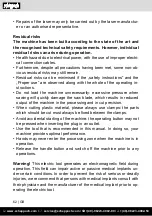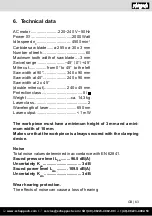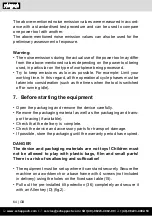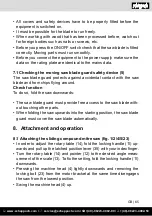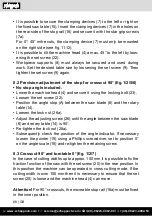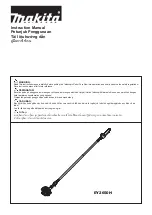
www.scheppach.com /
+(49)-08223-4002-99 /
+(49)-08223-4002-58
76 | GB
This may have the following causes:
• Passage points, where connection cables are passed through win-
dows or doors.
• Kinks where the connection cable has been improperly fastened or
routed.
• Places where the connection cables have been cut due to being
driven over.
• Insulation damage due to being ripped out of the wall outlet.
• Cracks due to the insulation ageing.
Such damaged electrical connection cables must not be used and are
life-threatening due to the insulation damage. Check the electrical con-
nection cables for damage regularly. Make sure that the connection ca-
ble does not hang on the power network during the inspection.
Electrical connection cables must comply with the applicable VDE and
DIN provisions. Only use connection cables with the same marking.
The printing of the type designation on the connection cable is manda-
tory.
AC motor:
The mains voltage must be 220
−
240 V~.
• Extension cables up to 25 m long must have a cross-section of 1.5
mm
2
.
Connections and repairs of electrical equipment may only be carried
out by an electrician.
Please provide the following information in the event of any enquiries:
• Type of current for the motor
• Machine data - type plate
13. Disposal and recycling
The equipment is supplied in packaging to prevent it from being dam-
aged in transit. The raw materials in this packaging can be reused or
recycled. The equipment and its accessories are made of various types
of material, such as metal and plastic. Defective components must be
disposed of as special waste. Ask your dealer or your local council.

